
The United States Atomic Energy Commission (AEC) was an agency of the United States government established after World War II by the U.S. Congress to foster and control the peacetime development of atomic science and technology. President Harry S. Truman signed the McMahon/Atomic Energy Act on August 1, 1946, transferring the control of atomic energy from military to civilian hands, effective on January 1, 1947. This shift gave the members of the AEC complete control of the plants, laboratories, equipment, and personnel assembled during the war to produce the atomic bomb.

Cyril Stanley Smith was a British metallurgist and historian of science. He is most famous for his work on the Manhattan Project where he was responsible for the production of fissionable metals. A graduate of the University of Birmingham and Massachusetts Institute of Technology (MIT), Smith worked for many years as a research metallurgist at the American Brass Company. During World War II he worked in the Chemical-Metallurgical Division of the Los Alamos Laboratory, where he purified, cast and shaped uranium-235 and plutonium, a metal hitherto available only in microgram amounts, and whose properties were largely unknown. After the war he served on the Atomic Energy Commission's influential General Advisory Committee, and the President's Science Advisory Committee.

Louis Alexander Slotin was a Canadian physicist and chemist who took part in the Manhattan Project. Born and raised in the North End of Winnipeg, Manitoba, Slotin earned both his Bachelor of Science and Master of Science degrees from the University of Manitoba, before obtaining his doctorate in physical chemistry at King's College London in 1936. Afterwards, he joined the University of Chicago as a research associate to help design a cyclotron.

Chicago Pile-1 (CP-1) was the world's first artificial nuclear reactor. On 2 December 1942, the first human-made self-sustaining nuclear chain reaction was initiated in CP-1 during an experiment led by Enrico Fermi. The secret development of the reactor was the first major technical achievement for the Manhattan Project, the Allied effort to create nuclear weapons during World War II. Developed by the Metallurgical Laboratory at the University of Chicago, CP-1 was built under the west viewing stands of the original Stagg Field. Although the project's civilian and military leaders had misgivings about the possibility of a disastrous runaway reaction, they trusted Fermi's safety calculations and decided they could carry out the experiment in a densely populated area. Fermi described the reactor as "a crude pile of black bricks and wooden timbers".

The Metallurgical Laboratory was a scientific laboratory at the University of Chicago that was established in February 1942 to study and use the newly discovered chemical element plutonium. It researched plutonium's chemistry and metallurgy, designed the world's first nuclear reactors to produce it, and developed chemical processes to separate it from other elements. In August 1942 the lab's chemical section was the first to chemically separate a weighable sample of plutonium, and on 2 December 1942, the Met Lab produced the first controlled nuclear chain reaction, in the reactor Chicago Pile-1, which was constructed under the stands of the university's old football stadium, Stagg Field.
The Advisory Committee on Human Radiation Experiments was established in 1994 to investigate questions of the record of the United States government with respect to human radiation experiments. The special committee was created by President Bill Clinton in Executive Order 12891, issued January 15, 1994. Ruth Faden of The Johns Hopkins Berman Institute of Bioethics chaired the committee.
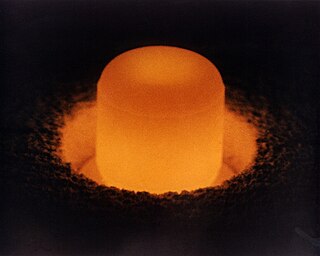
Plutonium-238 is a radioactive isotope of plutonium that has a half-life of 87.7 years.
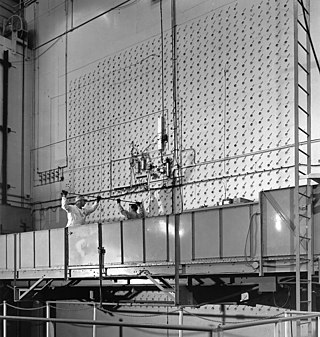
The X-10 Graphite Reactor is a decommissioned nuclear reactor at Oak Ridge National Laboratory in Oak Ridge, Tennessee. Formerly known as the Clinton Pile and X-10 Pile, it was the world's second artificial nuclear reactor, and the first designed and built for continuous operation. It was built during World War II as part of the Manhattan Project.
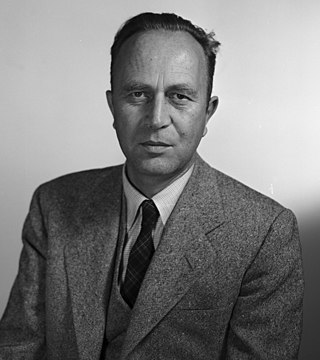
Joseph Gilbert Hamilton was an American professor of Medical Physics, Experimental Medicine, General Medicine, and Experimental Radiology as well as director (1948-1957) of the Crocker Laboratory, part of the Lawrence Berkeley National Laboratory. Hamilton studied the medical effects of exposure to radioactive isotopes, which included the use of unsuspecting human subjects.
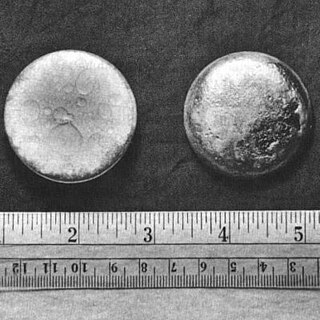
Plutonium is a radioactive chemical element with the symbol Pu and atomic number 94. It is an actinide metal of silvery-gray appearance that tarnishes when exposed to air, and forms a dull coating when oxidized. The element normally exhibits six allotropes and four oxidation states. It reacts with carbon, halogens, nitrogen, silicon, and hydrogen. When exposed to moist air, it forms oxides and hydrides that can expand the sample up to 70% in volume, which in turn flake off as a powder that is pyrophoric. It is radioactive and can accumulate in bones, which makes the handling of plutonium dangerous.

Since the discovery of ionizing radiation, a number of human radiation experiments have been performed to understand the effects of ionizing radiation and radioactive contamination on the human body, specifically with the element plutonium.
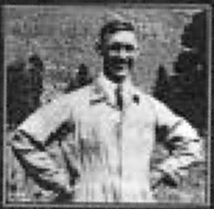
Albert Stevens (1887–1966), also known as patient CAL-1 and most radioactive human ever, was a house painter from Ohio who was subjected to an involuntary human radiation experiment and survived the highest known accumulated radiation dose in any human. On May 14, 1945, he was injected with 131 kBq of plutonium without his knowledge.

The Plutonium Files: America's Secret Medical Experiments in the Cold War is a 1999 book by Eileen Welsome. It is a history of United States government-engineered radiation experiments on unwitting Americans, based on the Pulitzer Prize–winning series Welsome wrote for The Albuquerque Tribune.
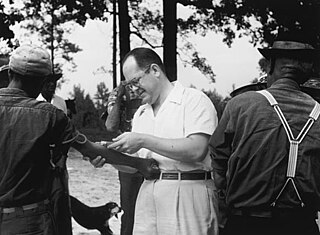
Numerous experiments which are performed on human test subjects in the United States are considered unethical, because they are performed without the knowledge or informed consent of the test subjects. Such tests have been performed throughout American history, but some of them are ongoing. The experiments include the exposure of humans to many chemical and biological weapons, human radiation experiments, injections of toxic and radioactive chemicals, surgical experiments, interrogation and torture experiments, tests which involve mind-altering substances, and a wide variety of other experiments. Many of these tests are performed on children, the sick, and mentally disabled individuals, often under the guise of "medical treatment". In many of the studies, a large portion of the subjects were poor, racial minorities, or prisoners.
The RaLa Experiment, or RaLa, was a series of tests during and after the Manhattan Project designed to study the behavior of converging shock waves to achieve the spherical implosion necessary for compression of the plutonium pit of the nuclear weapon. The experiment used significant amounts of a short-lived radioisotope lanthanum-140, a potent source of gamma radiation; the RaLa is a contraction of Radioactive Lanthanum. The method was proposed by Robert Serber and developed by a team led by the Italian experimental physicist Bruno Rossi.
Ralph Arthur James was an American chemist at the University of Chicago who co-discovered the elements curium (1944) and americium (1944–1945). Later he worked at UCLA and for the Lawrence Livermore laboratory in California.

Wright Haskell Langham was an internationally renowned expert in the fields of plutonium exposure, aerospace and aviation medicine, Eniwetok nuclear tests, the Palomares and Greenland nuclear accidents. Sometimes Langham was referred to as Mr. Plutonium.
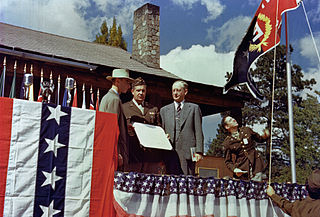
The Los Alamos Laboratory, also known as Project Y, was a secret laboratory established by the Manhattan Project and operated by the University of California during World War II. Its mission was to design and build the first atomic bombs. Robert Oppenheimer was its first director, serving from 1943 to December 1945, when he was succeeded by Norris Bradbury. In order to enable scientists to freely discuss their work while preserving security, the laboratory was located in a remote part of New Mexico. The wartime laboratory occupied buildings that had once been part of the Los Alamos Ranch School.
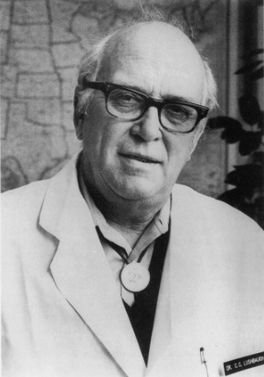
Clarence Chancelum Lushbaugh, Jr. was an American physician and pathologist. He was considered an expert in radiological accidents and injuries, as well as a pioneer in radiation safety research, and he is known for his controversial research involving human subjects.
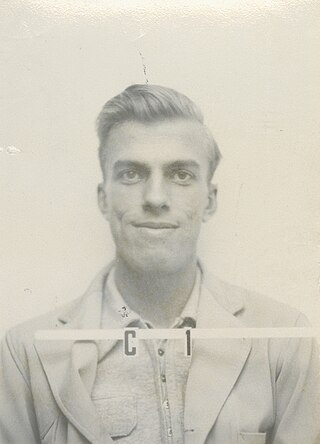
Louis Henry Hempelmann Jr, was an American physician who was the director of the Health Group at the Manhattan Project's Los Alamos Laboratory during World War II. After the war he was involved in research into radiology. A paper he published in the New England Journal of Medicine in 1949 warned of the dangers of using fluoroscopes to measure the size of children's feet.

















